The Economics and Statistics Division maintains archives of previous publications for accountability purposes, but makes no updates to keep these documents current with the latest data revisions from Statistics Canada. As a result, information in older documents may not be accurate. Please exercise caution when referring to older documents. For the latest information and historical data, please contact the individual listed to the right.
<--- Return to Archive
For additional information relating to this article, please contact:
May 06, 2024ELECTRICITY SUPPLY AND DISPOSITION, 2022 In 2022, total electricity supply in Nova Scotia was 10,792,131 megawatt hours. Almost all of this was available for use in Nova Scotia, with only small exports to the US or to other provinces.
Residential use accounted for the largest share of electricity sold to customers in Nova Scotia in 2022: 4,897,945 megawatt hours. This was followed by 3,168,029 megawatt hours of other industrial use and 2,595,777 megawatt hours for mining/manufacturing use.
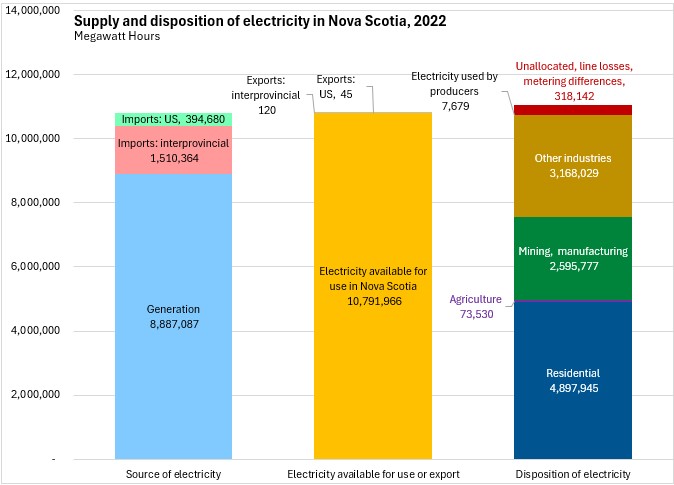
Total electricity supply in Nova Scotia increased by 3.4% from 2021 to 2022. The amount of electricity generated in Nova Scotia in recent years has declined while imports from other provinces have risen.
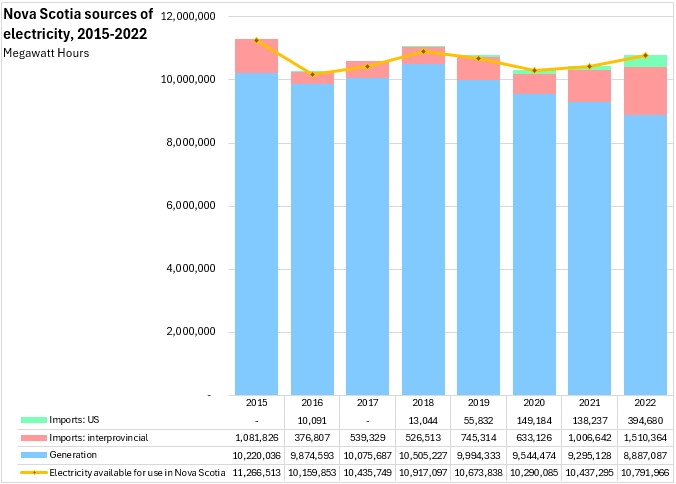
Thermal generation from Nova Scotia's utility sector remained the largest source of electricity supply: 6,734,248 megawatt hours in 2022. Imports from other provinces has grown to be the second largest source of electricity supply: 1,510,364 megawatt hours - ahead of both hydro (912,172 megawatt hours) and wind (1,125,258 megawatt hours).
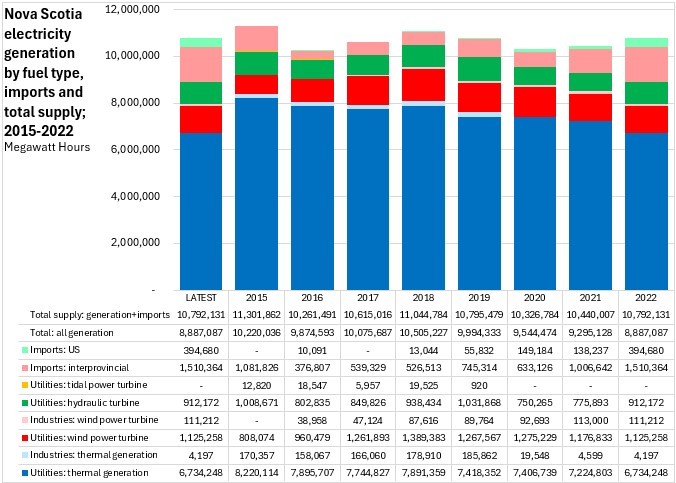
Residential electricty use has grown more steadily in Nova Scotia since 2015 while mining/manfuacturing and other industrial use have fluctuated. There has been a notable decline in electricity used by power producers themselves.
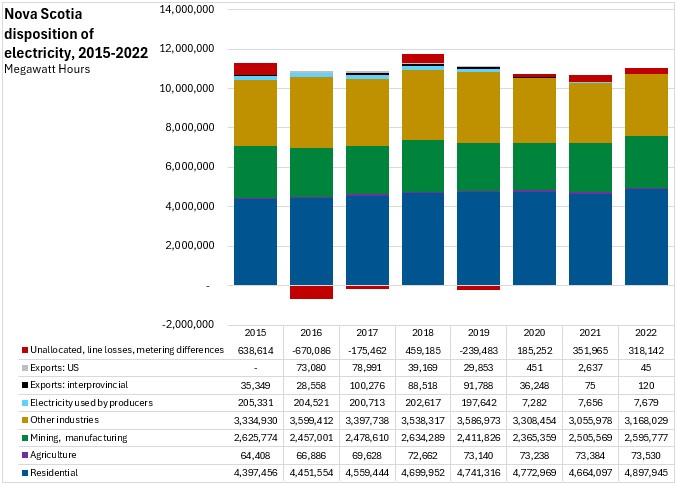
Across Canada, electricity supplies depend heavily on availability of hydroelectric power. Hydraulic turbines were the most significant source of electric power in Canada in 2022, but this is concentrated in Newfoundland and Labrador, Québec, Manitoba and British Columbia. Use of combustible fuels was more prevalent in electricity supply for Nova Scotia, Saskatchewan and Alberta. Nuclear turbines remain in use in Ontario and New Brunswick. Wind turbines have been growing as a source of electricity, particularly in Prince Edward Island. Solar generation accounts for small amounts of power in Ontario and Alberta.
The Maritime provinces and Québec rely more on interprovincial imports than other provinces for electricity supply in 2022.

On a per capita basis, Nova Scotia and Ontario had the lowest electricity supplies per capita in 2022. Newfoundland and Labrador's hydroelectricity resources were much larger (per capita) than those in other provinces.
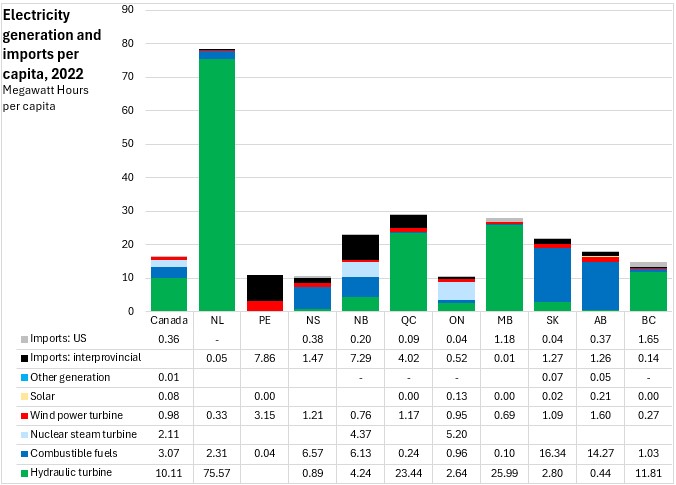
In 2022, the use of electricity was notably higher on a per capita basis in Newfoundland and Labrador, New Brunswick, Québec, Manitoba and Saskatchewan. Ontario, Nova Scotia and Prince Edward Island report comparatively low use of electricity per capita, either domestically or for exports.
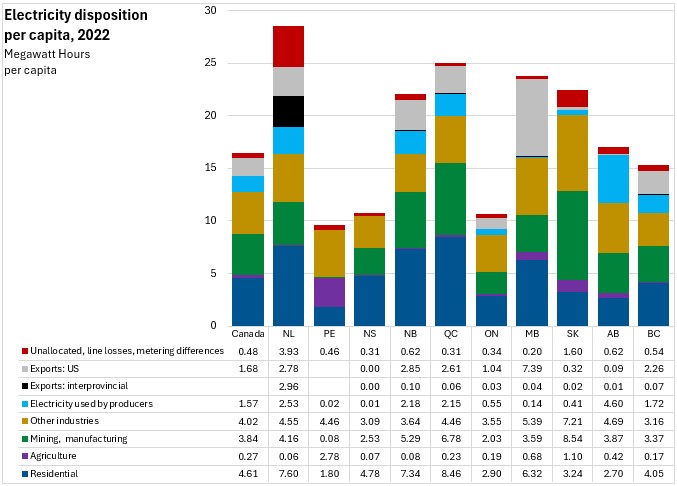
Source: Statistics Canada. Table 25-10-0020-01 Electric power, annual generation by class of producer; Table 25-10-0021-01 Electric power, electric utilities and industry, annual supply and disposition
<--- Return to Archive